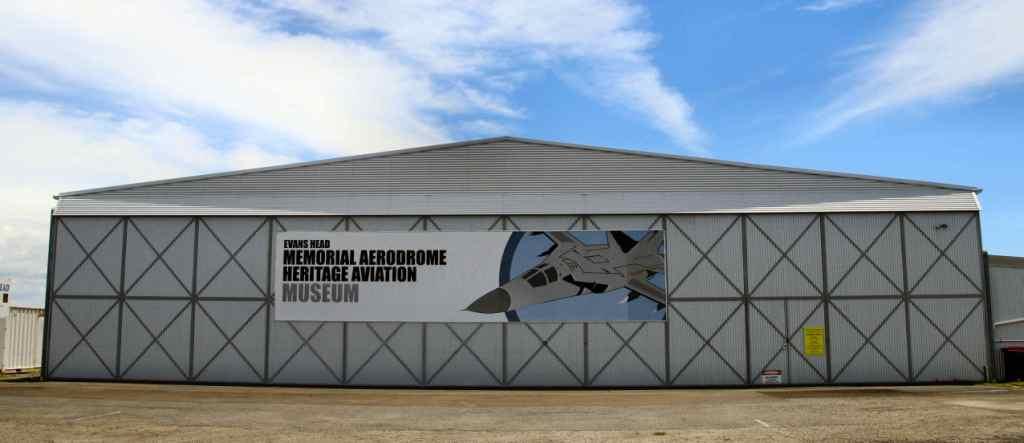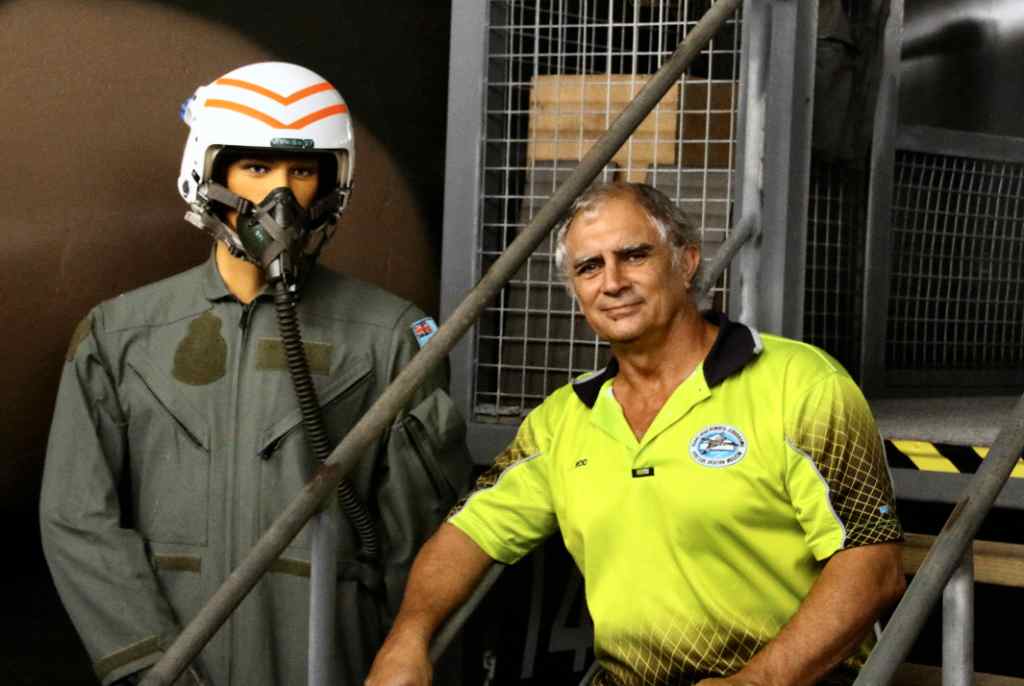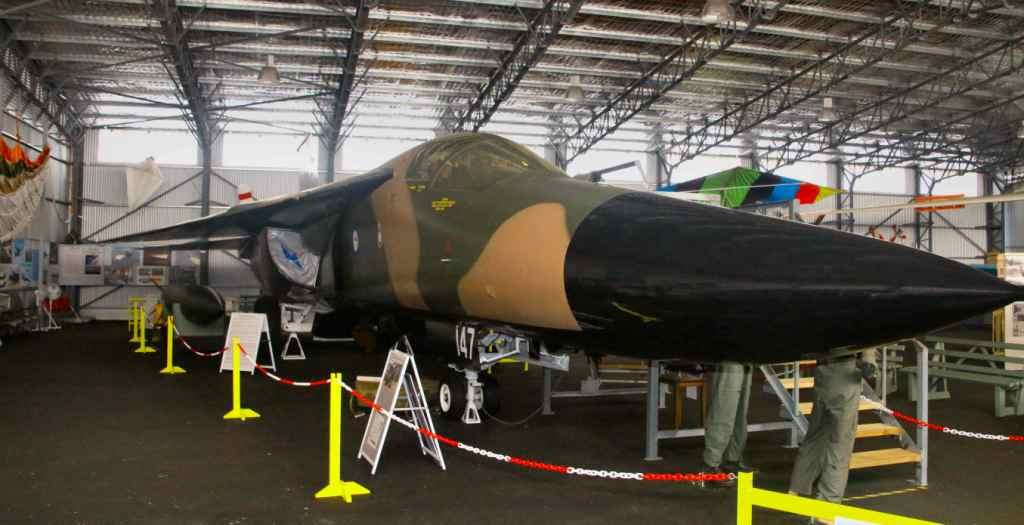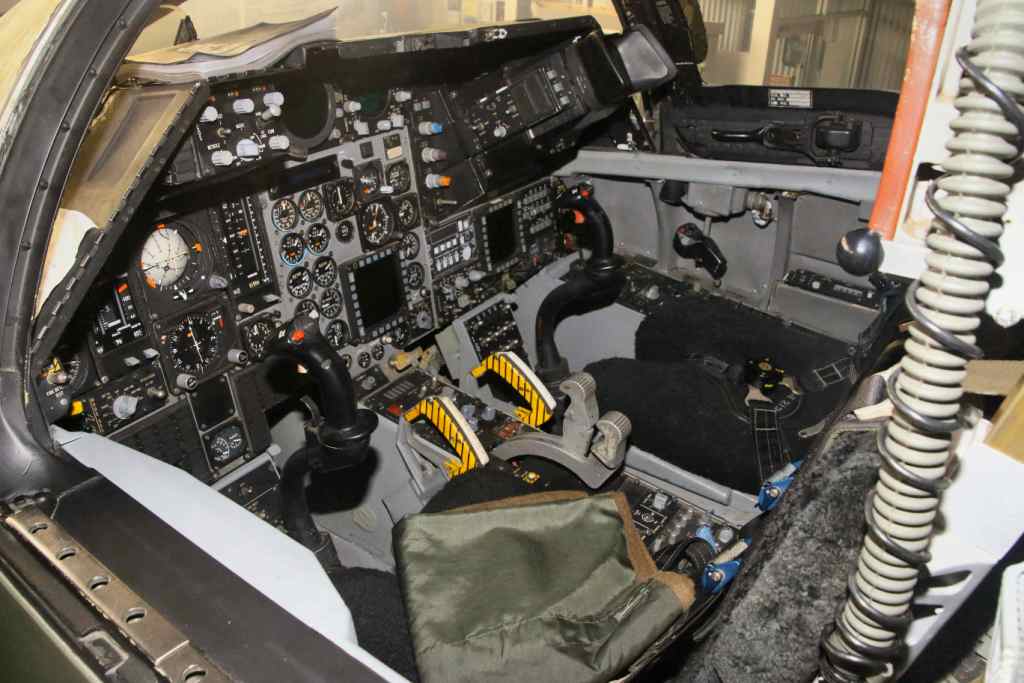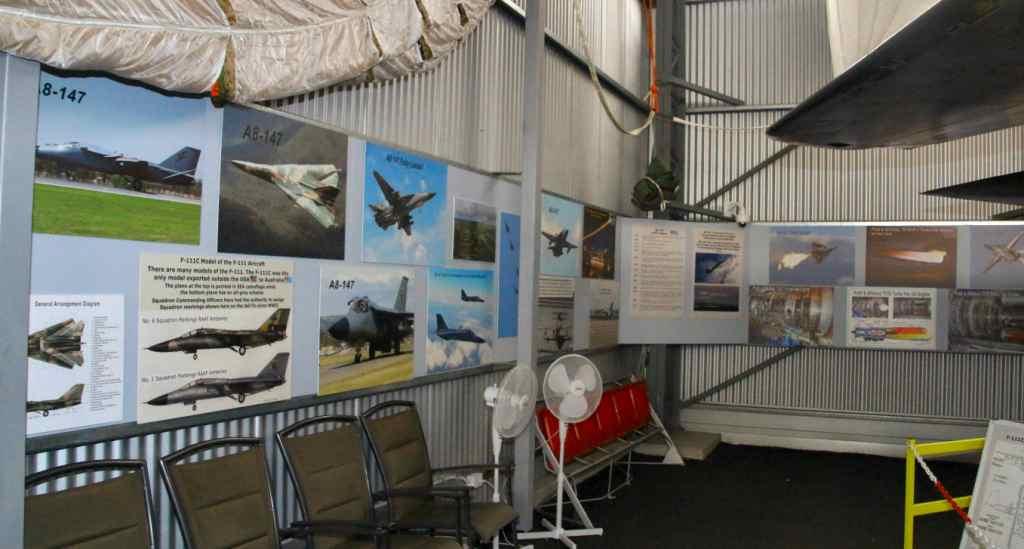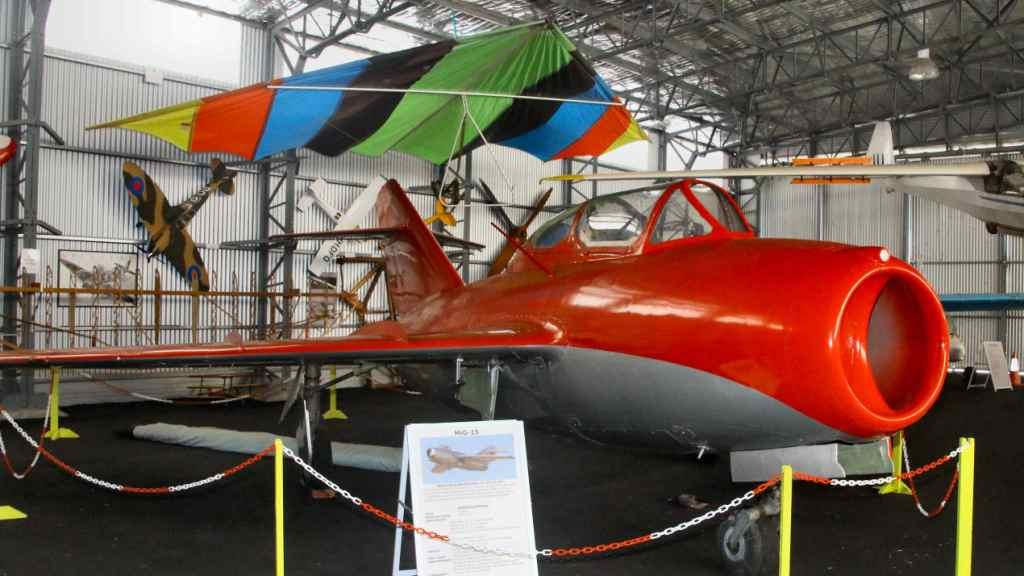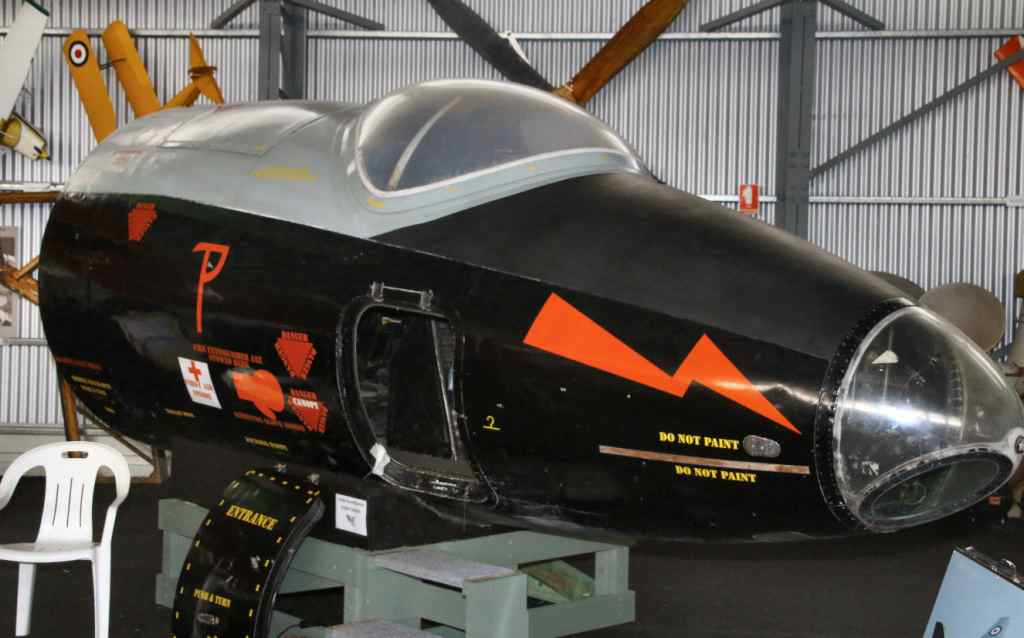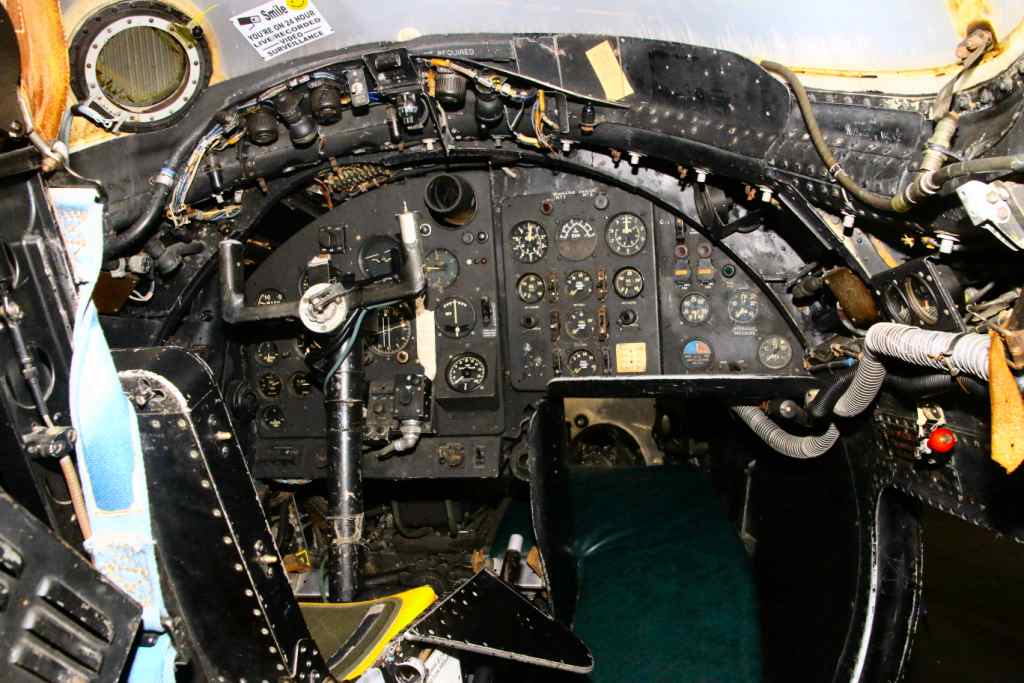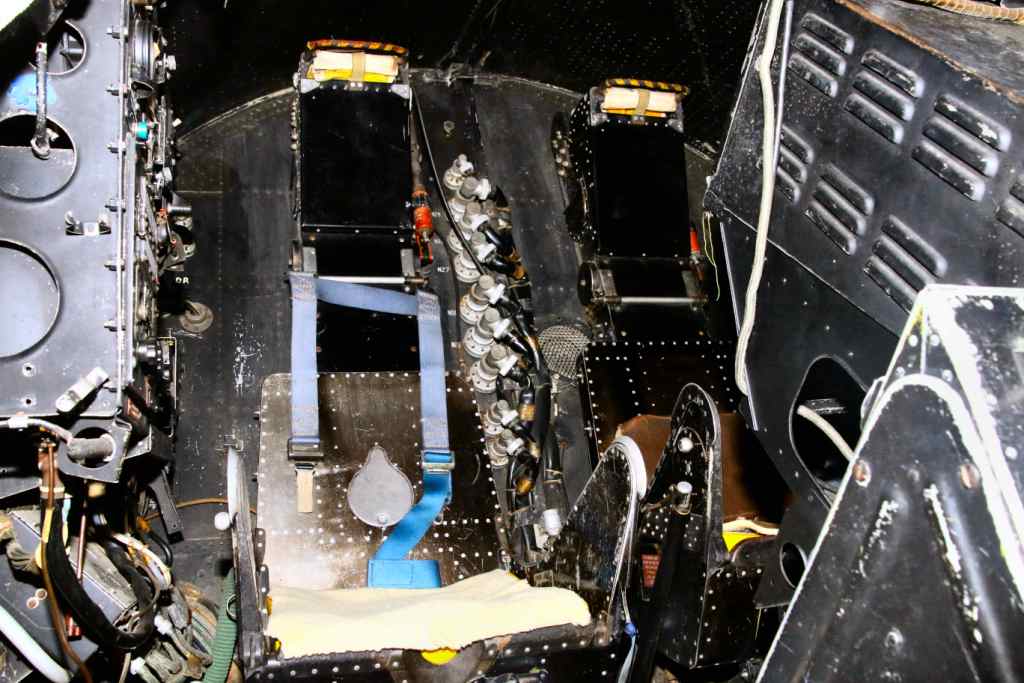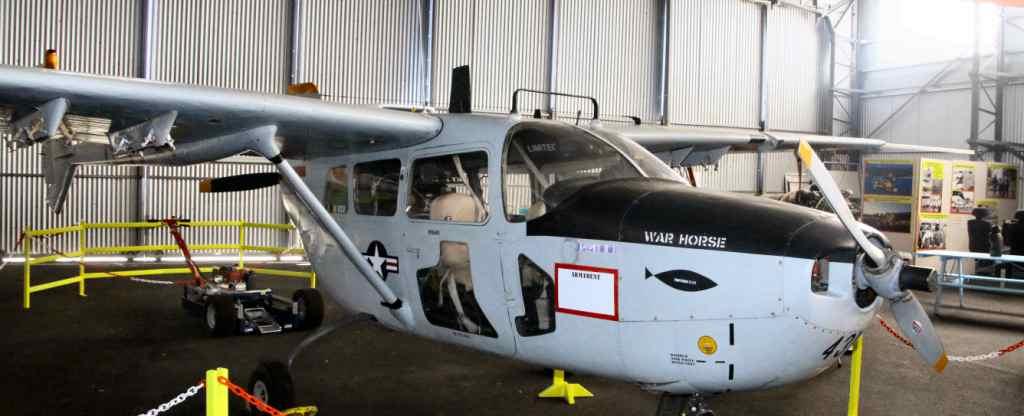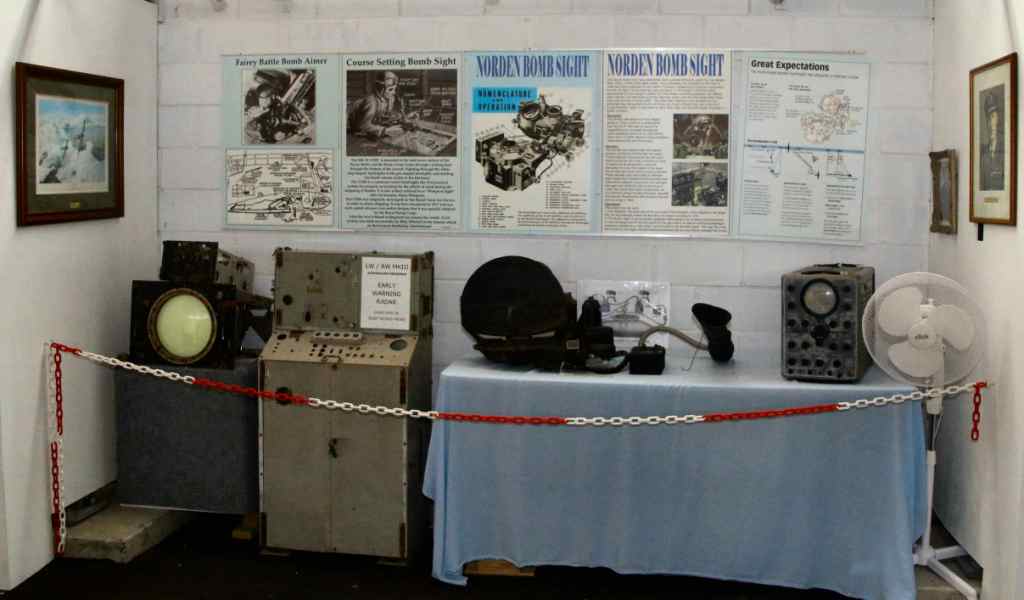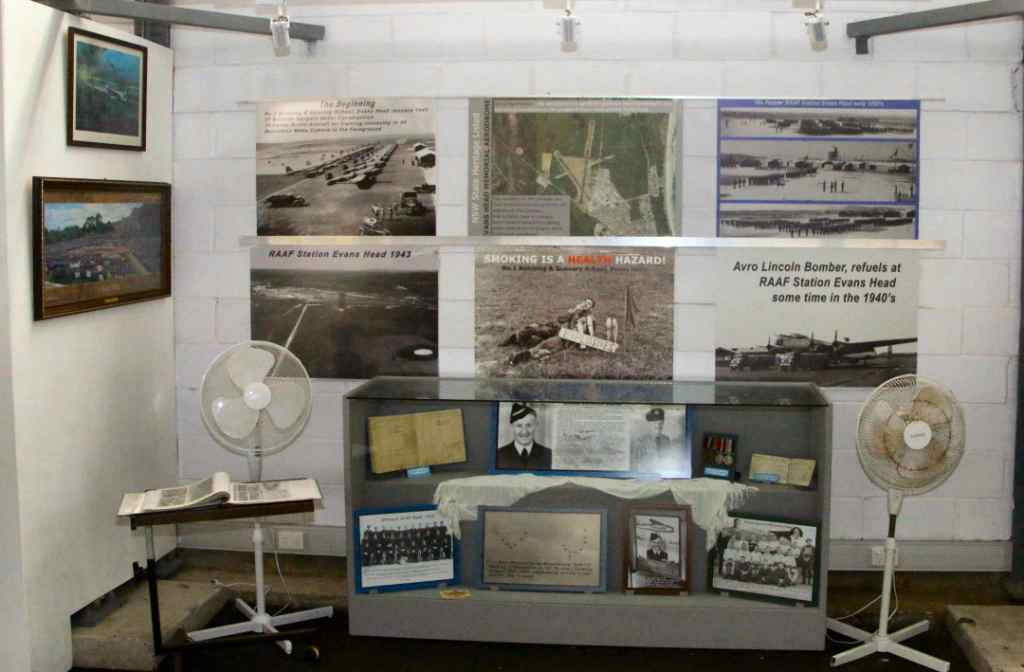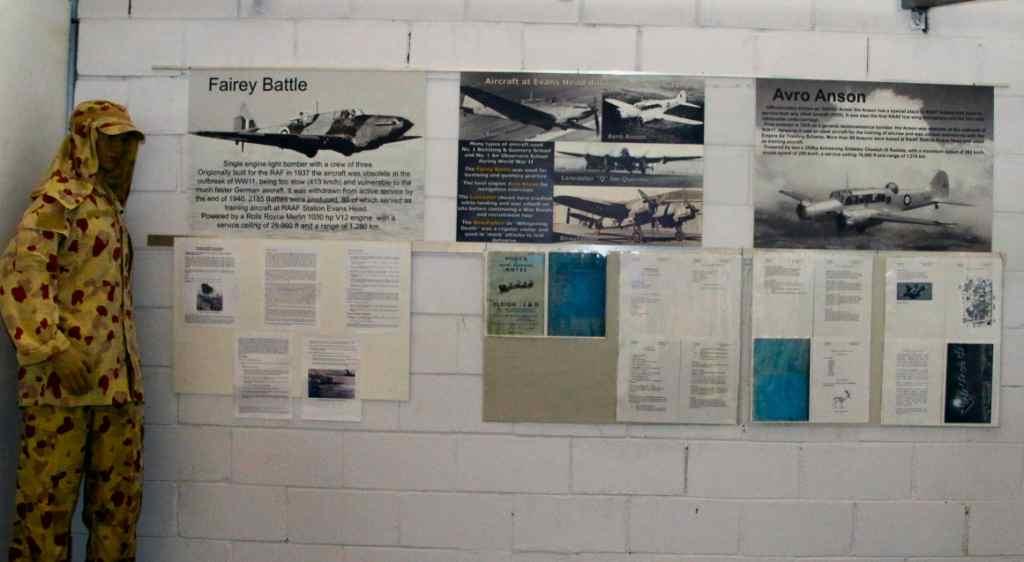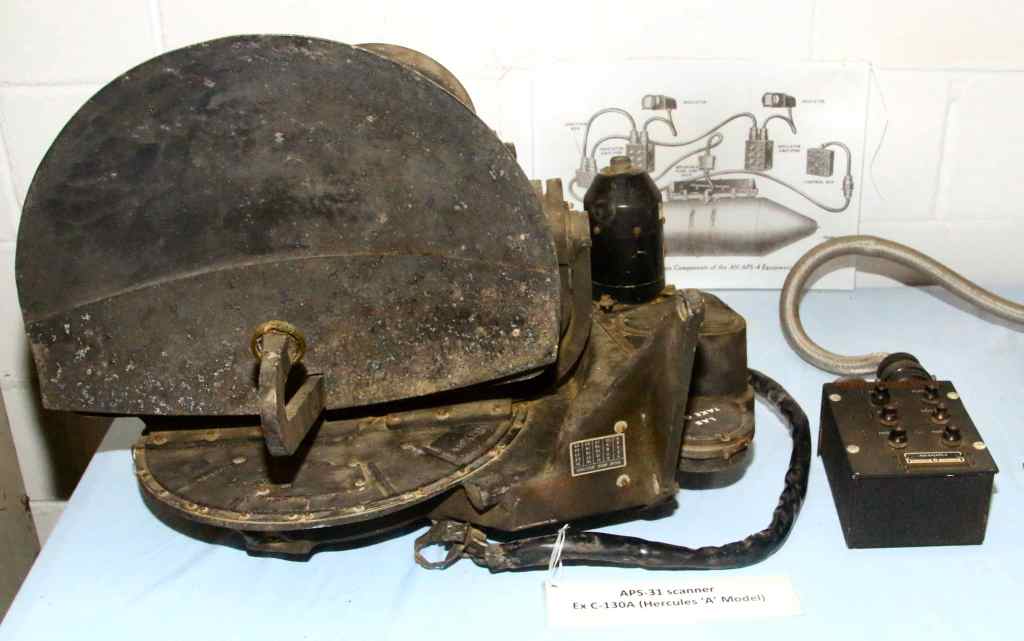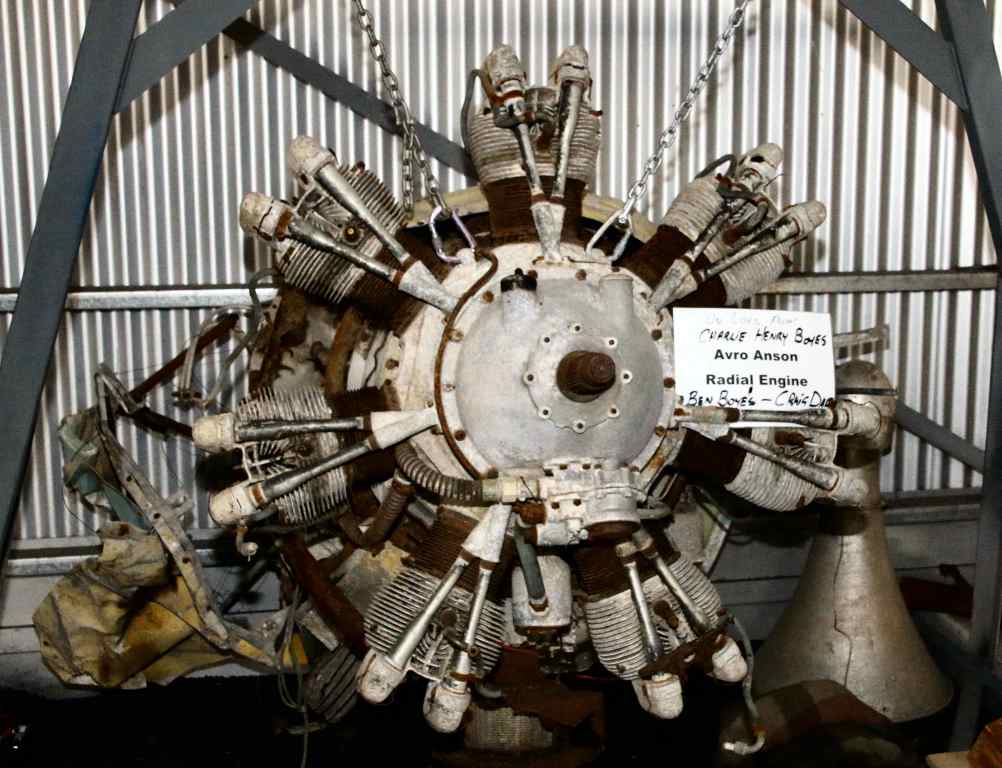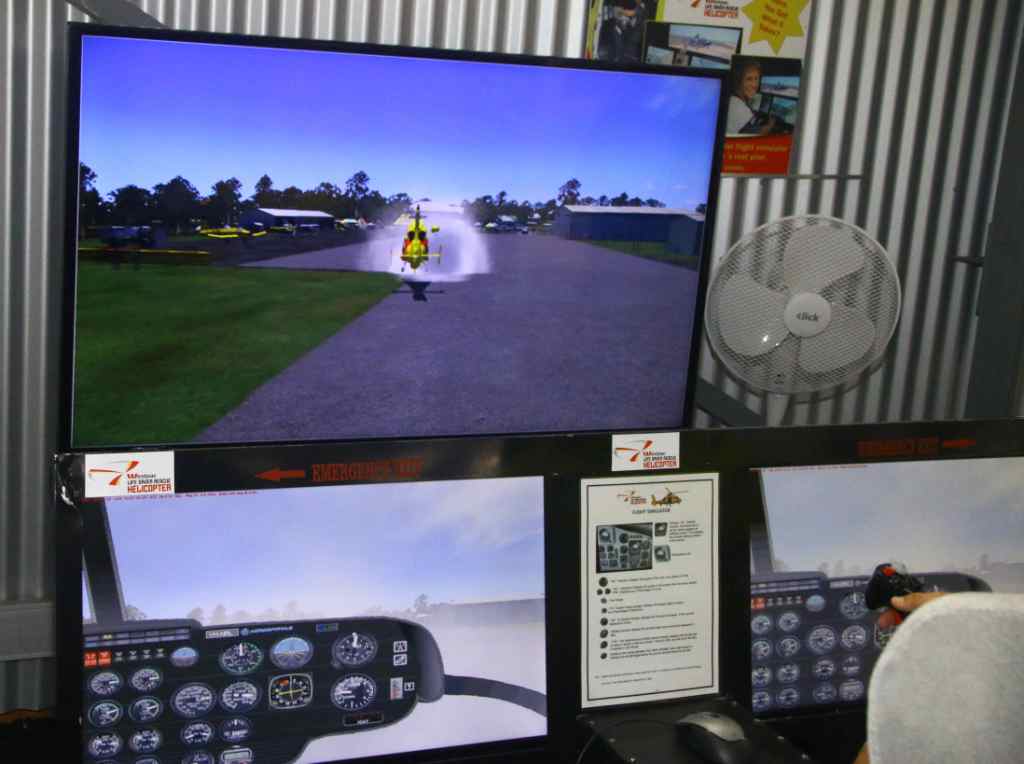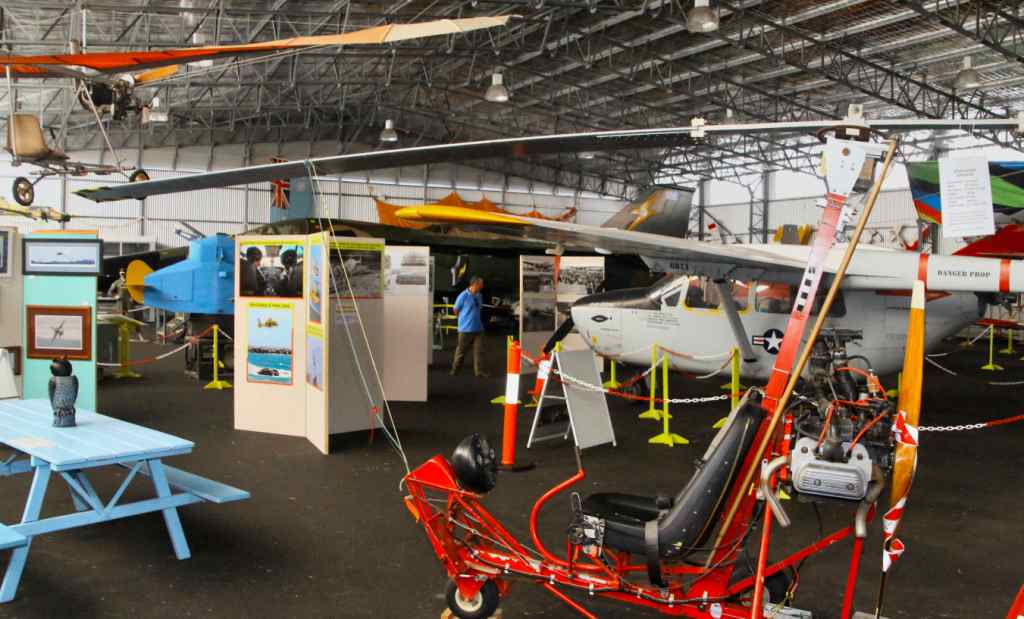|
|
||||||||||||
|
|
||||||||||||
|
Privacy Policy | Editorial Policy | Profit Policy | Join the Association | List of Members | Contact us | Index | Links |
||||||||||||
|
Back Go to page: 1 2 3 4 5 6 7 8 9 10 11 12 13 14 15 16 17 18 19 20 Forward
|
||||||||||||
|
Evans Head Heritage Aviation Museum.
About 2½ hours down the highway from Brisbane lies the small coastal township of Evans Head.
In a lot of respects, Evans Head is like a lot of the small towns that dot our eastern coastline, it has a population of about 2,700 people, good beaches, good surf, good fishing, great scenery and a happy relaxed community who welcome tourists with open arms. Where Evans Head differs from the rest is it also has a very good all weather aerodrome and an aviation museum.
A lot of these pics have been crunched to allow them to open quicker, to see the HD version, click each pic. |
||||||||||||
|
The Evans River that flows through the township was named after a Lieutenant Evans who made the first coastal survey back in the 1870’s. In 1877, Tom Paddon became the first white settler in the region when he was attracted to the district by gold fossickers. Having not made his fortune from gold, he tried oyster farming and prawning which eventually led to Evans Head becoming the first commercial prawn port in Australia. He also established the first school in the settlement. In 1919 an Italian immigrant, John Rosolen, built the first General Store which was quickly followed by others setting up a butcher shop and a bakery. John was a visionary and in 1930 he organised the establishment of the Evans Head airport.
Initially only used occasionally by small aircraft, with the outbreak of WW2, it grew dramatically and at the end of the war in 1945 it was the largest training base in the southern hemisphere having been the home of Australian, English and Canadian Pilots and was distinguished by its impressive 4 lengthy runways and associated taxiways and aprons.
The threat of a Japanese invasion led to much speculation about the formation of the “Brisbane Line” which would have made Evans Head the most northern air-base from which to defend eastern Australia. Fortunately, this strategy was not implemented.
The “Brisbane line” was an alleged plan to abandon Northern Australia in the event of a Japanese invasion. The allegation was made during an election campaign in October 1942 when Edward Ward, the Minister for Labour and National Services accused the previous government of planning this strategy. The accusation was unsubstantiated by Ward and firmly denied by Menzies and all members of the previous government. Curtin’s initial failure to dismiss the allegation and General Douglas MacArthur’s mention of it at a press conference in March 1943 led to the controversy gaining much momentum. Ward made repeated charges against the Menzies-Fadden government throughout 1943 and backed up his assertions by referring to a missing document.
The allegations created much public controversy and led to a Royal
Commission of Inquiry in June 1943. Mr Justice Lowe was appointed Royal
Commissioner. The terms of t
MacArthur building, cnr Queen and Edward Sts, Brisbane.
The Royal Commission found the documents to be complete and that no such plan had been official policy under the Menzies government.
While Ward’s allegations were unfounded the War Cabinet had put in place strategies prioritising defence for vital industrial areas in time of war. The plans were well known to members of parliament and while they were not connected to Ward’s charges they did form part of his belief in the existence of a Brisbane Line. Ward’s allegations were constructed from these ideas as well as evacuation policies and existing plans for a scorched earth policy.
In 1937, with war looming, the Commonwealth took control of the airfield
for use as a military base and between 1939 and 1940, under the command
of Wing Commander Valston
No.1 Bombing and Gunnery School (No.1 BAGS) operated Fairey Battle single-engined bombers from Evans Head. These were a British built single-engine light bomber built for the RAF in the late 1930’s by the Fairey Aviation Company. Although the “Battle” was powered by the same Rolls-Royce Merlin piston engine that gave contemporary British fighters high performance; it was weighed down with a three-man crew and a heavy bomb load. Despite being a great improvement on the aircraft that preceded it, by the time it saw action it was slow, limited in range and having only a single defensive .303 machine gun, was highly vulnerable to both anti-aircraft fire and fighters. By May 1940 it was suffering heavy losses of well over 50% per mission and by the end of 1940 it was withdrawn from combat service and relegated to training units overseas. For such pre-war promise, the Battle was one of the most disappointing of all RAF aircraft.
The creation of the Empire Air Training Scheme in December 1939, under which No1 BAGS was established, saw Australia undertake the training of 28,000 aircrew over a three-year period. At Evans Head extensive bombing and gunner ranges were established to the north and south of the Base as well as a sea leg to the south. The entire Base covered 600 square miles (1,500 Sq km). In addition to bombing and gunnery practice, the school also trained personnel for roles including Air Observers/Bomb Aimers, Wireless Operators/Air Gunners and Navigators. The main aircraft used for training were the Avro Anson and the Fairey Battle, of which some 70 operated from Evans Head.
In late 1941 with Japan entering the war, the proximity of RAAF Evans Head to Brisbane made the base an important defensive asset in the event of an attack. As a defensive measure, 19 gun pits on the aerodrome equipped with .303 calibre Vickers machine guns were constructed. Aircraft from the base were also engaged in coastal surveillance duties. As many as 17 transportable Bellman hangars were erected on the base, and a substantial marine search and rescue unit operated from their own wharves in the nearby township. Other facilities at the base included accommodation for up to 1400 personnel, a hospital, garbage and sewerage services and recreational activities
|
||||||||||||
|
Over 5,000 trainees passed through No 1 BAGS, including actor Chips Rafferty and sadly more than 1,000 of those who trained there were killed during the war.
In 1943, 1BAGS was disbanded and No 1 Air Observers School relocated
from RAAF Station Cootamundra to Evans Head, flying mainly Avro Anson
and CAC Wackett aircraft. An
As a measure of the high regard and appreciation held by the local population for the RAAF and the men and women based at Evans Head and who worked on and flew the “Battle” during the war, the Council has erected a 1/3 replica of a Fairy Battle on the outskirts of city. Click HERE to see the sign accompanying the replica.
Following the war, ownership of the airfield remained with the
Department of Defence and was used briefly for commercial air traffic
with Butler Air Transport being the main airline offering services. In
1952, defence transferred the Evans Head Aerodrome to the Department of
Transport. The remaining buildings of the RAAF Base were dismantled,
demolished o
Some of the WW2 buildings were moved a short distance away and form part
of Camp
Koinonia which is a year round camp and retreat set apart fo
There are 10 Heritage Listed World War II Air Force Base cabins located
There are three styles of cabins in the original layouts from the 1940's with the Radio Hut being the largest cabin with 3 bedrooms, kitchenette and common room. It sleeps 20 with 1x double bed and 9x single bunks (right.) |
||||||||||||
|
The Radio hut. |
||||||||||||
|
There is further information available on their web site HERE, and if you’re thinking of staying a few nights in the area and you want cheap but cheerful accommodation, you would be well advised to check them out.
In 1985, with the introduction of larger aircraft, Casino airport was closed for an upgrade and during this short period, it was necessary to reopen Evans Head to commercial traffic. To allow the regional airlines’ F27’s to operate in and out of Evans Head, runway 18/36 was extended to its current length of 1300m and one of the two taxiways allowing access to the apron area was resurfaced. Then in 1992, an Airport Local Ownership Plan allowed the airport to be transferred to the Richmond River Shire, and eventually passed to its current owners, the Richmond Valley Council when it was created by amalgamation in 2000. On 22 November 2002, the Evans Head Memorial Airport was added to and is the only airport on the NSW State Heritage Register.
Since Richmond River Shire gained control over the airport in 1992, its future has been threatened several times by residential developments approved by council but in breach of the transfer deeds which state:
(Local government) "shall take such action as is within its power to create land use zoning around the aerodrome which will prevent residential and other incompatible development in areas which are, or which may be, adversely affected by aircraft noise."
An industrial estate now occupies much of the former residential area
for the base. In the late 1990s, Richmond River Shire Council sought
approval from the Department of Transport to subdivide land for
residential development at the southern end of runway 14/32. Whilst this
was approved by the department, there is substantial evidence and
opinion that it was not in
In 2005, a management plan for the aerodrome was submitted by the Richmond Valley Council to the Heritage Office to allow the rezoning of airport land for the construction of a retirement village. The proposal gained more attention in 2007 when asbestos and heavy metal pollutants were confirmed to be present on the site. In April 2009, the development was approved by council, despite objections that the development was a land use planning conflict. Final approval was granted for the development to proceed in March 2012, however upon hearing submissions from several parties representing the interests of the general aviation community the Joint Regional Planning Panel the approval was conditional on the basis that landholders are unable to object to ongoing aviation activities at the airport. (See HERE)
As of June 2012 only runway 18/36 remains in use, with a sealed surface of 1,303 m (4,275 ft). The runway has no lighting and is suitable for operations by recreational and general aviation category aircraft during daylight (HJ) hours only. The Aeronautical Information Publication (AIP) issued by Air Services Australia on 28 June 2012 shows runway 14/32 has now been decommissioned, but it is still used for model aircraft. There is no fuel available at the airport. As it is an uncontrolled airport, pilots must stay within defined airspace constraints and monitor specific radio frequencies when the Evans Head Air Weapons Range, which is only 5 nautical miles (9.3 km) southwest of the airfield, is in operation.
Today the airfield is home to the “Evans Head Memorial Aerodrome Heritage Aviation Association” which runs the Aviation Museum from the completely restored Bellman Hangar. |
||||||||||||
|
This hangar, one of the RAAF’s original war-time hangars, was completely stripped down, sand blasted, painted then re-assembled and is now home to the numerous aircraft on display.
|
||||||||||||
|
On Wednesday 27th January, Brian Carroll, (ex-23Sqn Pilot Briefing Officer at Amberley) and I were given a guided tour of the museum. The Museum is normally open on Saturdays and Sundays only, from 10.00am to 4.00pm but as we were down that way in the middle of the week, we asked if there was a chance we could get a look through and Rod Kinnish (above) who is the OC of the Museum, volunteered his valuable time to show us around and for that we thank him very much.
The centre of the display is the F-111. A8-147 is one of the 6 retired F-111 C models on permanent loan to aviation museums around Australia and this aircraft has a strong connection to Evans Head having flown more missions to the Weapons Range than any other F-111. It was also the last F-111 to do service with the RAAF.
|
||||||||||||
|
This aircraft first flew in 1969 and was delivered to 1 Squadron at Amberley in 1973. It was retired in 2010 and delivered to the Museum in August 2013.
Two trucks, under police escort, made their way through the night to deliver the F-111 from Amberley to the Museum. The wings had been removed and were on one truck with the rest of the aircraft on the other. At the airport, the bits were unloaded, re-assembled and then the whole aircraft was placed in the hangar. As there were only a few of these wonderful aircraft available for displays, there was a tender process to obtain one and Rod told us the whole competitive tendering process took about two years.
This display is somewhat different to others we have seen in that you can get up close and personnel to the aircraft and in fact can arrange to sit inside. The museum has erected a walk up platform where everyone can look inside the aircraft and see the Pilot and Nav’s working office.
|
||||||||||||
|
Inside the working end of the F-111.
Other F-111 aircraft on display can be found at:
|
||||||||||||
|
||||||||||||
|
And one at the Pacific Museum at Pearl Harbour. (C Model)
In all, the RAAF had 47 F-111s in various configurations.
|
||||||||||||
|
As well as having the aircraft on display and open, the museum has a large amount of supporting material around the wall. When you visit the museum, make sure you take your glasses, there is a lot of interesting material to read.
There are rules and there are laws: The rules are made by men who think that they know how to fly your airplane better than you. The laws (of physics) were ordained by God. You can and sometimes should suspend the rules, but you can never suspend the laws.
Other aircraft on display include the following:
Mig 15
|
||||||||||||
|
The Russian Mig-15 was one of the first successful jet fighters to incorporate swept wings to achieve high transonic speeds. In combat over Korea, it outclassed straight-winged jet day fighters which were largely relegated to ground attack roles and was quickly countered by the similar American swept-wing F-86 Sabre. The MiG-15 is often mentioned, along with the North American F-86 Sabre, as the best fighter aircraft of the Korean War and among the best fighter aircraft of all time.
When refined into the more advanced MiG-17, the basic design would again surprise the West when it proved effective against supersonic fighters such as the F-105 Thunderchief and McDonnell Douglas F-4 Phantom II in the Vietnam War of the 1960s. The MiG-15 is believed to have been one of the most widely produced jet aircraft ever made; in excess of 12,000 were manufactured. Licensed foreign production may have raised the production total to over 18,000. The MiG-15 remains in service with the North Korean Air Force as an advanced trainer.
The business end of a Canberra.
|
||||||||||||
|
This aircraft is a British aircraft which was imported into Australia. It is a B2 model and was built in England in 1954. Being an ex RAF example it is substantially different to a RAAF Australian built Mk20 Canberra in that it has a crew of 3 instead of 2 for the Aussie version, however, a significant number of British Canberras were used by the RAAF especially for trial work and at least 2 surviving display aircraft in South Australia are the British versions. The crew consisted of the Pilot, Navigator (Nav Plotter) and Bomb Aimer (Nav Observer) and this particular cockpit comes from an aircraft that was withdrawn from use in 1962 and thus has a very low mod state, in fact the internal fit is very much like what was found in a WW2 Lancaster or Mosquito aircraft with aids such as 'Rebecca' and 'GEE' and similar period instrumentation.
This is the only Canberra worldwide still in this early fit-out. The canopy comes with a complete history of status cards with the cockpit detailing its flying history with the RAF. The Museum is in discussions to also acquire a complete RAAF Canberra for display.
What is significant is that the RAAF F-111s replaced the Canberras which used the South Evans Head RAAF Weapons Range in the mid 1950s to late 1960s.
|
||||||||||||
|
Inside the Canberra.
|
||||||||||||
|
The pic at right shows the two seats behind the pilot’s seat in the RAF
Canberras. These
When required, the Bomb Aimer would crawl through the gap in the pic above (follow the conduit) to the Perspex cone in the nose where he would direct the aircraft over the target. Once again, this aircraft is open to public who can climb in and see the environment in which the crew worked.
|
||||||||||||
|
Cessna O-2 Skymaster.
|
||||||||||||
|
The “Push-pull” Cessna O-2 Skymaster was a military version of the civvy Cessna 337 and was used extensively during the Vietnam War as forward air control aircraft. It was a low-cost twin-engine piston-powered aircraft, with one engine in the nose of the aircraft and a second engine in the rear of the fuselage. The push-pull configuration meant it was easier to fly than a conventional light twin, especially on one engine, as the thrust was applied through the centre of the aircraft and the high wing design allowed for clear observation below and behind the aircraft. It first flew in January 1967 and the plane went into production shortly thereafter.
It replaced the O-1 bird dog aircraft which was a military version of the Cessna 170 and was so successful that it continued to be operated by the USAF until the late 1980’s.
Cessna built a total of 532 of the aircraft for the military and 2,993 of the Civvy versions. They stopped production in 1982.
|
||||||||||||
|
Fighter Pilots are steely eyed, weapons systems managers who kill bad people and break things. However, they can also be very charming and personable. The average fighter pilot, despite sometimes having a swaggering exterior, is very much capable of such feelings as love, affection, intimacy and caring. (However, these feelings don't involve anyone else.)
The museum has a significant amount of informative and historical material on its walls, make sure you allow time to read it all.
|
||||||||||||
|
|
||||||||||||
|
|
||||||||||||
|
|
||||||||||||
|
Rod has left a deliberate error to see who is awake, can you spot it?? |
||||||||||||
|
|
||||||||||||
|
|
||||||||||||
|
|
||||||||||||
|
The 7 cylinder Cheetah engine above is from an Avro Anson. These engines were made by the British firm Armstrong Siddley and powered the Avro Anson and the Airspeed Oxford aircraft. It produced 338 HP (252 kW) at 2100 RPM. The basic design of the engine remained unchanged from its introduction in 1935 to when it was no longer made in 1948. It was the first engine of its type to be certified for 1200 hours of operational time between overhauls.
Armstrong Siddley made 37,200 of these 13.65 litre engines.
We know Don Payne will print this out and pin it to his bed-room wall!!
|
||||||||||||
|
|
||||||||||||
|
The museum installed a Westpac rescue helicopter flight simulator in which museum visitors can climb into the seat and fly the helicopter. The simulator uses an identical control system to the real Westpac Helicopter and will eventually be housed in a helicopter cockpit bubble with participants able to fly missions over a simulated Evans Head.
Click the video below. |
||||||||||||
|
|
||||||||||||
|
We had a great morning at the museum and a great day at Evans Head, thanks again to Rod Kinnish who really looked after us. Although Evans Head is a few kilometres off the highway, it is definitely worth diverting in for a short stay. We did try and have a look over the weapons range but it was busy that day and we couldn’t get on – another day perhaps.
The museum is open on Saturdays and Sundays from 10.00am to 4.00pm and cost is $5.00 per person or $15.00 per family.
We can recommend it! |
||||||||||||
|
|
||||||||||||
|
|
||||||||||||
|
As a pilot only two bad things can happen to you (and one of them will):
a. One day you will walk out to the aircraft, knowing it is your last flight. b. One day you will walk out to the aircraft, not knowing it is your last flight.
|
||||||||||||
|
|
||||||||||||
|
Back Go to page: 1 2 3 4 5 6 7 8 9 10 11 12 13 14 15 16 17 18 19 20 Forward |

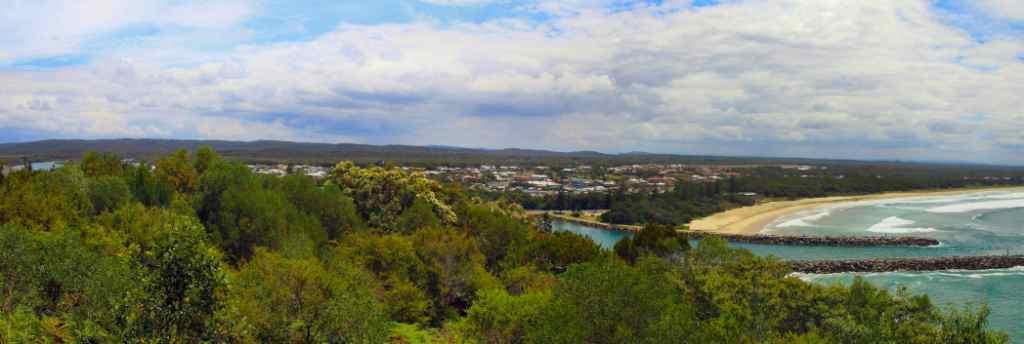
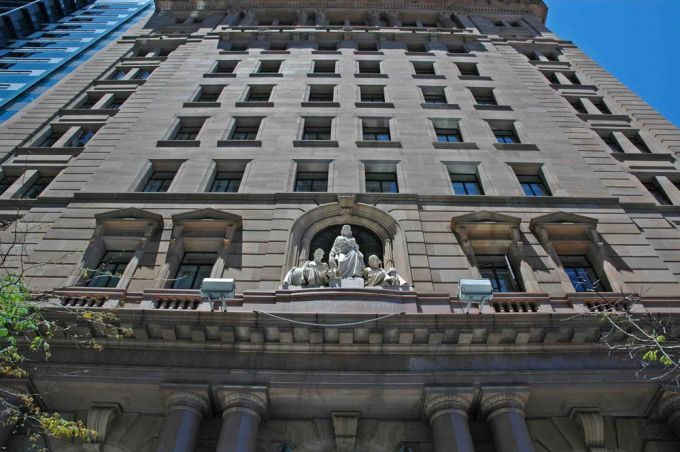 he
commission were to focus on whether any document concerning the so
called “Brisbane Line” was missing from the official files and if so
what was the nature of this document.
he
commission were to focus on whether any document concerning the so
called “Brisbane Line” was missing from the official files and if so
what was the nature of this document.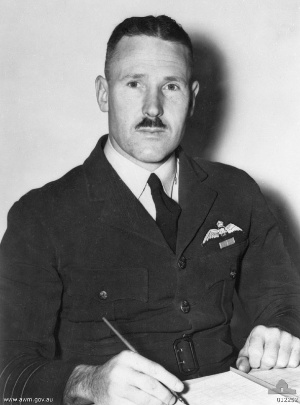 Hancock, KBE, CB, DFC (right), (later to become Air Commodore and Chief
of Air Staff from 1961-1965) who from 1937-1939 was the RAAF’s director
of Works and Buildings, flood mitigation works and additional land
acquisitions were carried out to bring the Base up to speed. During the
early years of World War II, he also commanded No. 1 Bombing and Gunnery
School which was established and fully operational by December 1941.
Valstron Hancock had graduated from Duntroon, then in 1929 transferred
to the RAAF and qualified as a pilot.
Hancock, KBE, CB, DFC (right), (later to become Air Commodore and Chief
of Air Staff from 1961-1965) who from 1937-1939 was the RAAF’s director
of Works and Buildings, flood mitigation works and additional land
acquisitions were carried out to bring the Base up to speed. During the
early years of World War II, he also commanded No. 1 Bombing and Gunnery
School which was established and fully operational by December 1941.
Valstron Hancock had graduated from Duntroon, then in 1929 transferred
to the RAAF and qualified as a pilot.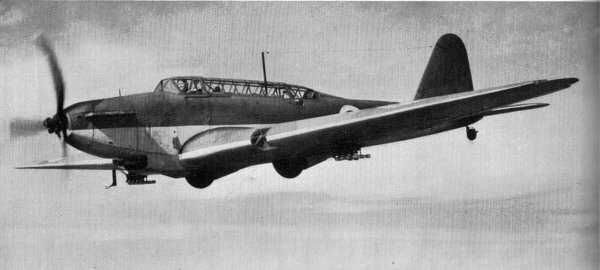
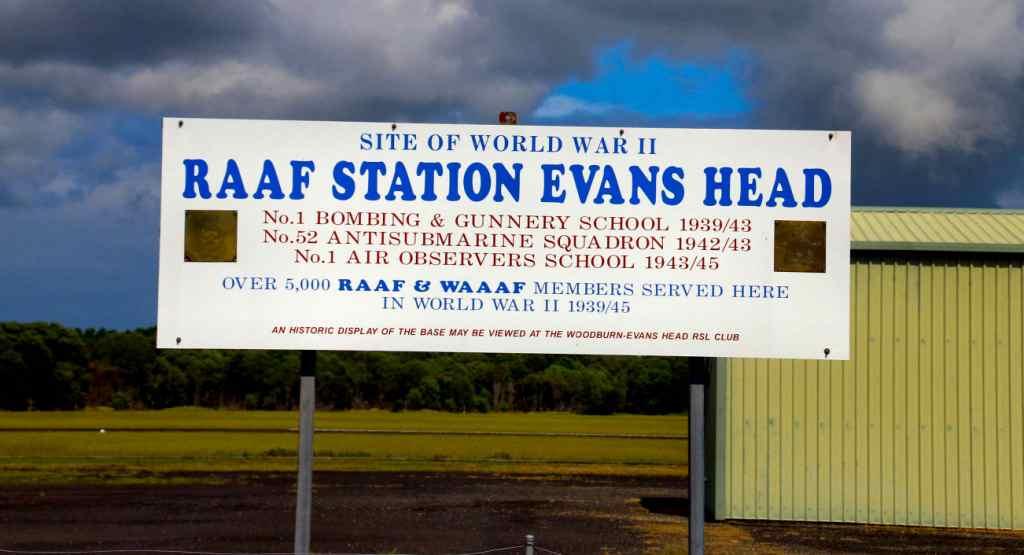
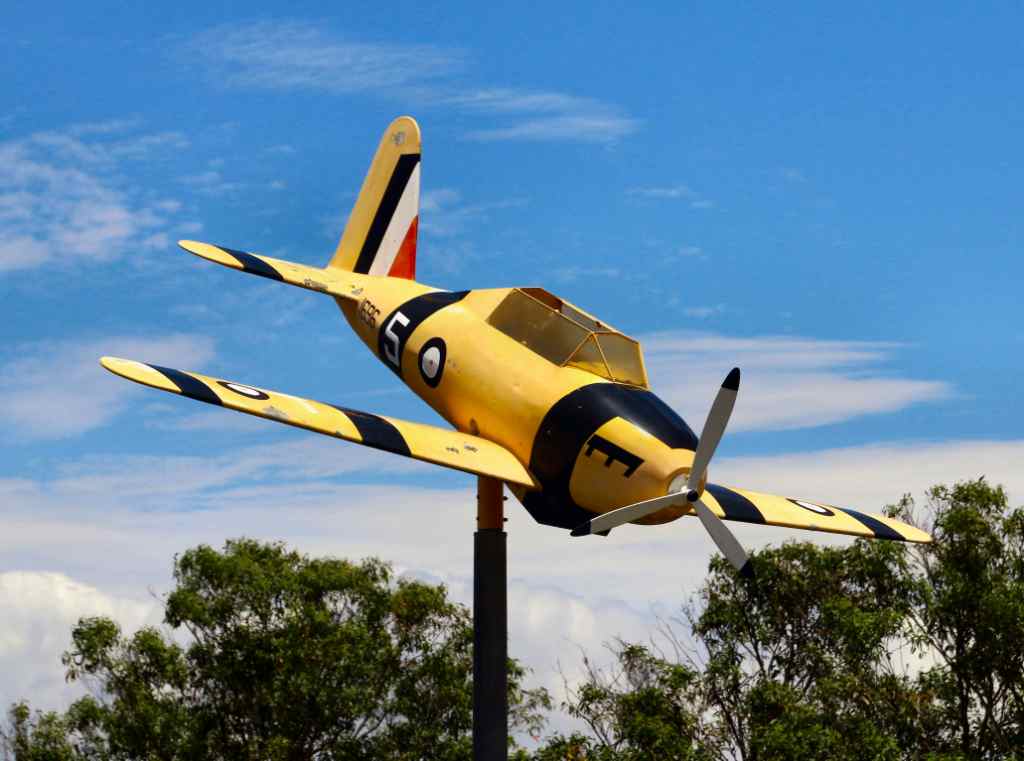
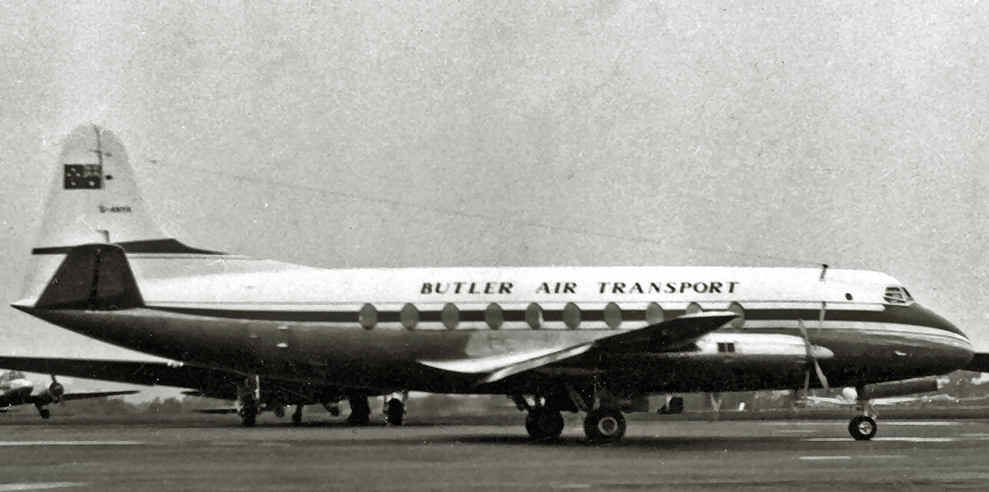 r relocated during the
1950s and by the middle of the decade, commercial operations had
relocated to the larger town of Casino. The airfield has since been used
as an emergency landing ground, RAAF aircraft storage facility (all
World War II vintage aircraft had been moved or disposed of by 1958) and
ordnance depot. It has also been used as a staging facility for flood
relief operations.
r relocated during the
1950s and by the middle of the decade, commercial operations had
relocated to the larger town of Casino. The airfield has since been used
as an emergency landing ground, RAAF aircraft storage facility (all
World War II vintage aircraft had been moved or disposed of by 1958) and
ordnance depot. It has also been used as a staging facility for flood
relief operations.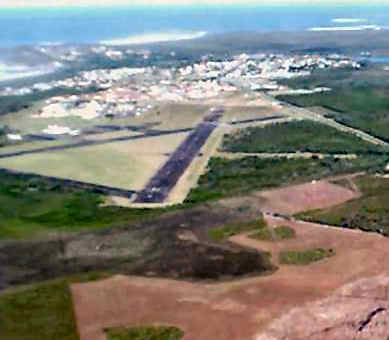 accordance with the original intention of the
Airport Local Ownership Agreement. The residential estates encroached
upon existing noise contours and led to council shortening the available
distance of the runway and restricting the size and type of aircraft
operations. The actions of council have also been criticised by
veteran's groups.
accordance with the original intention of the
Airport Local Ownership Agreement. The residential estates encroached
upon existing noise contours and led to council shortening the available
distance of the runway and restricting the size and type of aircraft
operations. The actions of council have also been criticised by
veteran's groups.